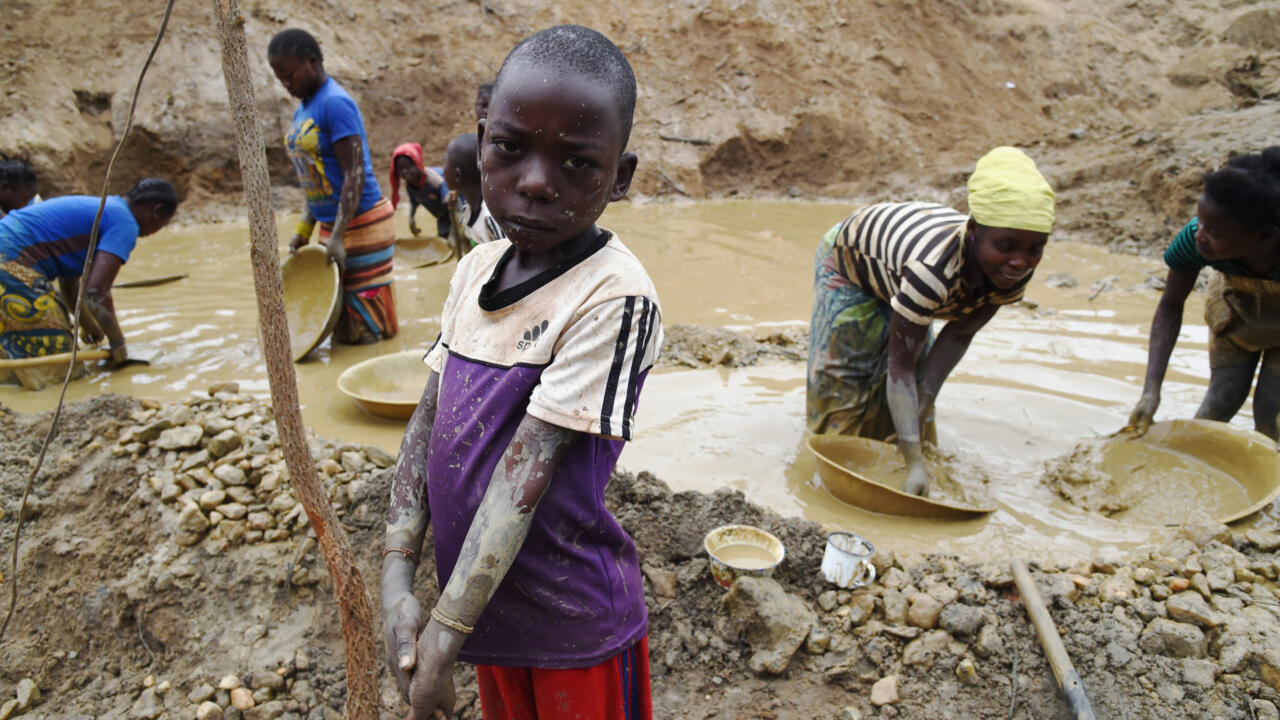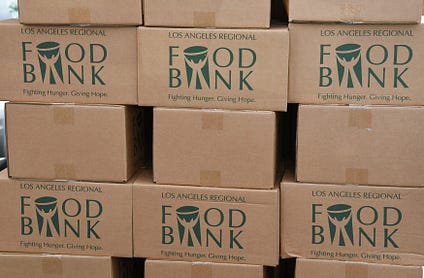What Kerala’s declaration of eradicating extreme poverty really means – The Indian Express

Kerala’s Achievement in Eradicating Extreme Poverty: A Milestone for Sustainable Development Goals
The state of Kerala announced on November 1 that it has successfully eradicated extreme poverty, becoming the first state in India to achieve this significant milestone. This accomplishment represents a major advancement in the pursuit of Sustainable Development Goal 1 (SDG 1: No Poverty), which aims to end poverty in all its forms everywhere.
Defining and Measuring Poverty in the Context of SDG 1
Global and National Benchmarks
Poverty is measured against several international and national standards. Kerala’s achievement is contextualized by these benchmarks, although the state employed a unique methodology for its program.
- World Bank (Extreme Poverty): Subsistence on under $3.00 per day, based on 2021 purchasing power parity (PPP).
- World Bank (Poverty Lines): $4.20 per day for lower-middle-income countries and $8.30 per day for upper-middle-income countries.
- Niti Aayog (India): The Multidimensional Poverty Index (MPI), which assesses poverty across 12 indicators in health, education, and standard of living.
Kerala’s Localized Approach to SDG 1
The Government of Kerala developed a distinct framework to identify and support families in extreme poverty, focusing on specific distress factors rather than relying solely on income-based metrics. This targeted approach aligns with the SDG principle of “leaving no one behind.” The four key areas of focus were:
- Food
- Health
- Housing
- Income
The Extreme Poverty Eradication Programme (EPEP): A Multi-faceted Strategy for SDGs
The declaration is the result of a targeted, four-year initiative led by local bodies. The EPEP, launched in May 2021, demonstrates a comprehensive strategy that addresses multiple SDGs simultaneously.
Program Inception and Identification Process
The program began with a comprehensive identification process managed by the local self-government department. After extensive field visits and verification rounds, the initial list of 118,309 families was refined to a final figure of approximately 59,000 families requiring immediate and tailored support.
Implementation Through Micro-Plans and Local Governance
The core of the EPEP involved creating tailor-made micro-plans for each identified family, implemented by local self-governing bodies. This decentralized execution model is a prime example of effective local governance contributing to SDG 16 (Peace, Justice and Strong Institutions). Key interventions included:
- Food Security (SDG 2: Zero Hunger): Local bodies provided meals to 20,648 families identified as lacking a steady food supply, directly addressing Target 2.1 to end hunger.
- Housing (SDG 11: Sustainable Cities and Communities): Under the state’s Life Mission scheme, 4,005 out of 4,677 identified homeless families were provided with homes, contributing to Target 11.1 for adequate and affordable housing.
- Health and Education (SDG 3 & SDG 4): The micro-plans incorporated specific interventions to address the health and educational needs of each family, promoting good health, well-being, and quality education.
- Access to Services and Rights (SDG 16: Peace, Justice and Strong Institutions): The “Avakasam Athivegam” (Rights Fast) campaign was launched to ensure all beneficiaries had access to essential civic documents and services, strengthening institutional inclusivity. Services provided included:
- MGNREGS job cards
- Voter IDs
- Aadhaar cards
- Bank accounts
- Social security pensions
- Electricity and cooking gas connections
National Context and Broader Implications for SDG 8 and SDG 10
India’s Progress in Poverty Reduction
Kerala’s success occurs within a national context of significant poverty reduction. A World Bank report from October 2025 noted that India’s extreme poverty rate fell from 16.2% in 2011-12 to 2.3% in 2022-23. This progress is linked to increased employment, which supports SDG 8 (Decent Work and Economic Growth).
Persistent Challenges
Despite national progress, the World Bank highlighted ongoing challenges that impact the achievement of SDGs, particularly SDG 8 and SDG 10 (Reduced Inequalities).
- Youth Employment: A high rate of 13.3%, especially among graduates (29%).
- Gender Disparities: Despite a female employment rate of 31%, significant gender gaps persist.
- Informal Employment: The majority of agricultural and non-farm jobs remain informal, lacking social protection.
Conclusion: A Model for SDG Localization
Kerala’s eradication of extreme poverty serves as a powerful model for localizing the Sustainable Development Goals. By employing a data-driven, people-centric approach and leveraging strong local institutions, the state has made a direct and impactful contribution to SDG 1. The acknowledged support from opposition parties further underscores the importance of SDG 17 (Partnerships for the Goals) in achieving comprehensive development outcomes.
Analysis of SDGs in the Article
1. Which SDGs are addressed or connected to the issues highlighted in the article?
-
SDG 1: No Poverty
- The entire article is centered on the eradication of extreme poverty in Kerala, which is the primary goal of SDG 1. It discusses definitions of poverty (World Bank’s $3/day threshold), national poverty reduction efforts, and a specific state-level program to eliminate it.
-
SDG 2: Zero Hunger
- The article explicitly mentions that food was one of the four “distress factors” used by the Kerala government to identify families in extreme poverty. It states that the program identified and provided meals to 20,648 families who lacked a steady food supply.
-
SDG 3: Good Health and Well-being
- Health is listed as another of the four key distress factors addressed by Kerala’s micro-plans. The Niti Aayog’s Multidimensional Poverty Index, also mentioned, includes health as a core area, linking poverty alleviation directly to health outcomes.
-
SDG 5: Gender Equality
- The article touches upon this goal when citing the World Bank’s report on India, which notes “gender disparities in employment despite a 31 per cent female employment rate” as a remaining challenge in the broader context of poverty reduction.
-
SDG 7: Affordable and Clean Energy
- The “Avakasam Athivegam” campaign in Kerala is described as ensuring beneficiary families have access to essential services, specifically mentioning “electricity, cooking gas connections,” which directly relates to providing modern energy services.
-
SDG 8: Decent Work and Economic Growth
- The article discusses employment as a key factor in poverty reduction. It refers to the World Bank’s analysis of India’s falling urban employment rate, challenges in youth employment, and the prevalence of informal jobs. The Kerala government’s campaign also included providing MGNREGS job cards.
-
SDG 11: Sustainable Cities and Communities
- The issue of homelessness is directly addressed. The article states that housing was a key distress factor and that the Kerala government’s survey identified 4,677 homeless families, providing homes to 4,005 of them under the “Life Mission government scheme for the homeless.”
2. What specific targets under those SDGs can be identified based on the article’s content?
-
Target 1.1: Eradicate extreme poverty for all people everywhere, currently measured as people living on less than $1.25 a day.
- The article’s main subject is Kerala’s announcement of eradicating extreme poverty. It also discusses the updated World Bank definition of extreme poverty as subsisting on under $3 per day.
-
Target 1.2: Reduce at least by half the proportion of men, women and children of all ages living in poverty in all its dimensions according to national definitions.
- The article highlights that the Kerala government chose not to rely on international parameters but created its own definition based on distress factors like food, health, housing, and income, identifying 59,000 families to target for its poverty eradication program.
-
Target 1.3: Implement nationally appropriate social protection systems and measures for all.
- The “Avakasam Athivegam” campaign, which ensured families received social security pensions and MGNREGS job cards, is a direct implementation of a social protection system.
-
Target 2.1: By 2030, end hunger and ensure access by all people… to safe, nutritious and sufficient food all year round.
- The article mentions a specific action towards this target: “The survey also identified 20,648 of the 59,286 families as those without access to a steady food supply. This group was provided meals by local bodies across the state.”
-
Target 8.5: By 2030, achieve full and productive employment and decent work for all women and men.
- The article links poverty reduction to employment, citing World Bank data on urban employment, gender disparities in the workforce, and the high percentage of informal jobs in India.
-
Target 8.6: By 2020, substantially reduce the proportion of youth not in employment, education or training.
- The article specifically points to this as a challenge, noting a youth employment rate of 13.3 percent in India, which hinders overall poverty reduction efforts.
-
Target 11.1: By 2030, ensure access for all to adequate, safe and affordable housing and basic services.
- This target is directly addressed by the “Life Mission” scheme mentioned in the article, which provided homes to 4,005 of the 4,677 identified homeless families.
3. Are there any indicators mentioned or implied in the article that can be used to measure progress towards the identified targets?
- Proportion of population below the international poverty line: The article explicitly mentions the World Bank’s poverty line of $3 per day and states that India’s extreme poverty fell from 16.2% to 2.3% between 2011-12 and 2022-23.
- Number of people lifted out of nationally defined poverty: The article states that Kerala’s program targeted 59,000 families identified through specific distress factors (food, health, shelter, income), and the declaration of success implies these families are no longer in that state.
- Prevalence of food insecurity: An indicator is the number of families without a steady food supply. The article provides a baseline figure of 20,648 families who were identified and then provided with meals.
- Number of homeless persons: The article provides a clear indicator by stating that the state survey identified 4,677 homeless families and that 4,005 of them were provided with homes.
- Proportion of population with access to essential services: The “Avakasam Athivegam” campaign aimed to provide civic documents, social security, electricity, and cooking gas. The number of families who received these services would be a direct indicator.
- Unemployment rate: The article mentions several employment-related indicators from the World Bank report, such as the urban employment rate (6.6%), youth employment rate (13.3%), and female employment rate (31%).
4. SDGs, Targets, and Indicators Table
| SDGs | Targets | Indicators Identified in the Article |
|---|---|---|
| SDG 1: No Poverty | 1.1 Eradicate extreme poverty. 1.2 Reduce poverty in all its dimensions. 1.3 Implement social protection systems. |
– Proportion of population living on under $3/day. – Number of families (59,000) identified and supported based on national poverty definitions (food, health, housing, income). – Provision of social security pensions and MGNREGS job cards. |
| SDG 2: Zero Hunger | 2.1 End hunger and ensure access to food. | – Number of families without a steady food supply (20,648) who were provided with meals. |
| SDG 5: Gender Equality | 5.5 Ensure women’s full participation in economic life. | – Female employment rate (mentioned as 31% for India). |
| SDG 7: Affordable and Clean Energy | 7.1 Ensure universal access to modern energy. | – Number of families provided with electricity and cooking gas connections through the “Avakasam Athivegam” campaign. |
| SDG 8: Decent Work and Economic Growth | 8.5 Achieve full and productive employment. 8.6 Reduce the proportion of youth not in employment. |
– Urban employment rate (6.6%). – Youth employment rate (13.3%). – Proportion of formal vs. informal jobs (23% of non-farm paid jobs are formal). |
| SDG 11: Sustainable Cities and Communities | 11.1 Ensure access to adequate and affordable housing. | – Number of homeless families identified (4,677). – Number of homes provided to homeless families (4,005). |
Source: indianexpress.com
What is Your Reaction?
 Like
0
Like
0
 Dislike
0
Dislike
0
 Love
0
Love
0
 Funny
0
Funny
0
 Angry
0
Angry
0
 Sad
0
Sad
0
 Wow
0
Wow
0




















































.jpg.webp?itok=0ZsAnae9#)




























